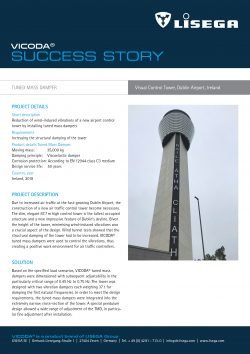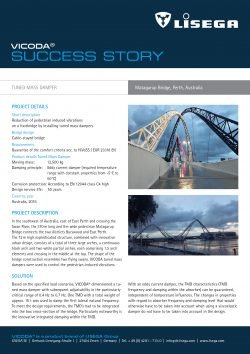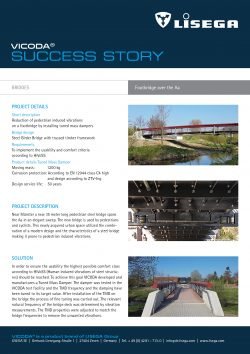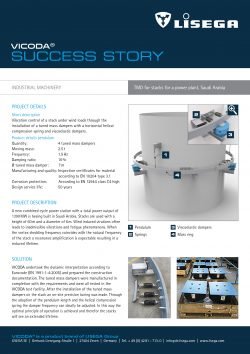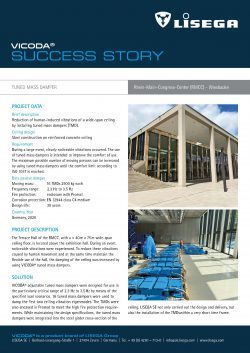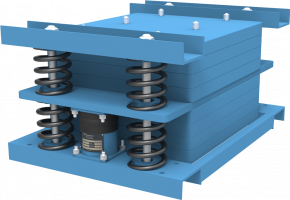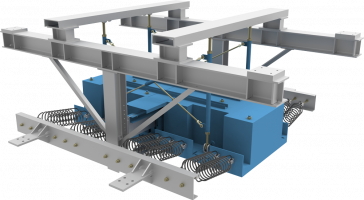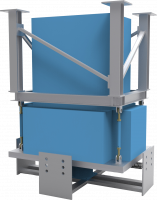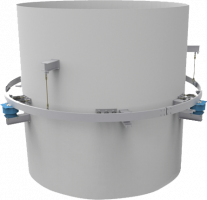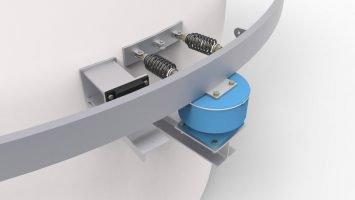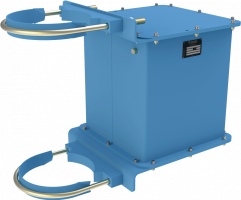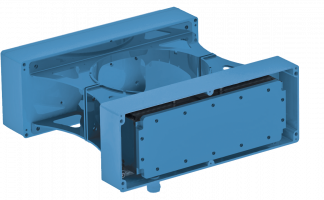Tuned Mass Dampers (TMD)
Tuned mass dampers (TMDs) are a cost-effective and reliable solution for reducing vibrations in buildings, machinery and equipment.
There are various concepts for tuned mass dampers:
- Passive systems
- Semi-active systems
- Active systems
Passive tuned mass dampers are a proven means of reducing unwanted vibrations. They consist of a mass, springs and dampers. Tuned to the structure to be settled, they reduce resonance vibrations.
Active and semi-active systems are always used when structural properties change or there is insufficient installation space for passive systems.
- Fields of application
- Pedestrian bridges, balconies, visitor galleries and ceilings
- Skyscrapers, airport towers and other tall structures
- Stacks and chimneys
- Piping systems, machinery and plants
- Functional principle of passive tuned mass dampers
- Functional principle of semi-active and active systems
- Product features
- Mounting examples
- Fields of application
- Functional principle of passive tuned mass dampers
- Functional principle of semi-active and active systems
- Product features
- Mounting examples
Fields of application
Tuned mass dampers as effective vibration protection for all applications
Undesired vibrations occur in almost all sectors and fields. Our engineers specialize in solving vibration problems and implementing the optimum tuned mass damper for every application.
Pedestrian bridges, balconies, visitor galleries and ceilings
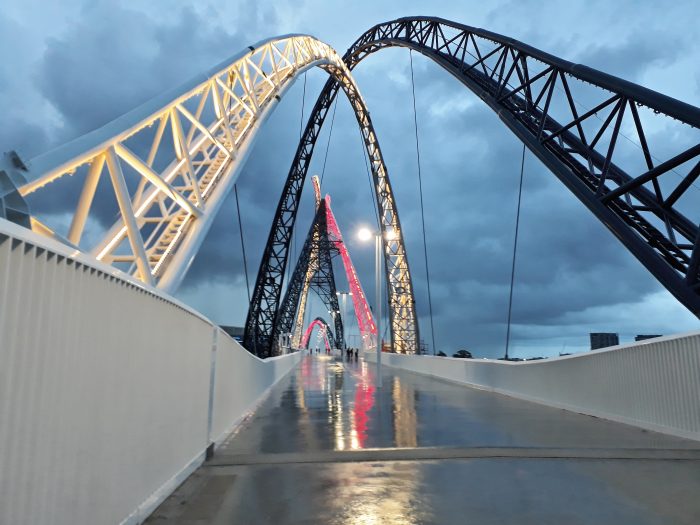
Pedestrian-induced vibrations can be effectively controlled with
passive tuned mass dampers.
Skyscrapers, airport towers and other tall structures

Tall and slender buildings are susceptible to wind-induced vibrations. Tuned mass dampers allow a high degree of comfort in the building and maximize the service life. Passive, semi-active and active systems are all used in building and bridge construction.
Stacks and chimneys
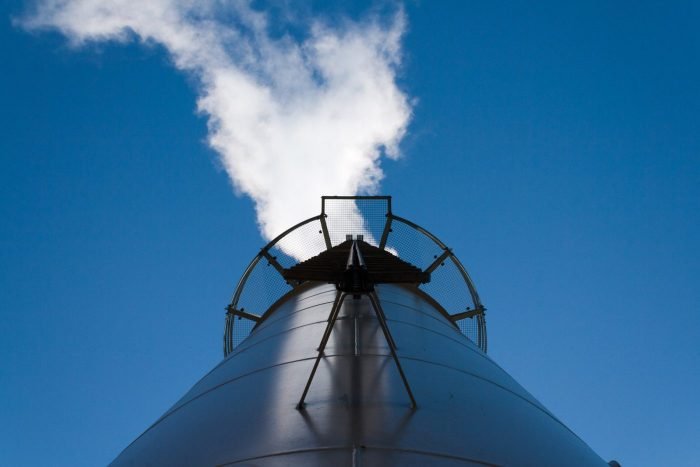
Steel chimneys in particular usually have a low degree of structural damping and are therefore prone to wind-induced vibrations. Using passive tuned mass dampers, the vibrations can be controlled effectively and the service life of the chimney can be increased.
Piping systems, machinery and plants
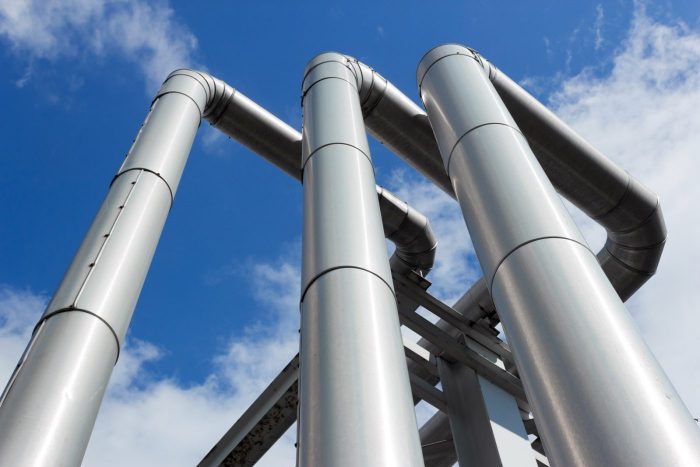
Flow-induced vibrations in pipelines, as well as vibrations of components and machines are a well-known problem in plant and mechanical engineering. By using both passive and semi-active or active systems, these vibrations can be effectively reduced.
Functional principle of passive tuned mass dampers
Modern structures with slender, cantilevered shapes usually have a low degree of structural damping, making them susceptible to vibrational excitation by wind and traffic loads as well as pedestrian movement. Tuned mass dampers increase the structural damping of structures and thus reduce resonance vibrations. They are tuned to the structure’s natural frequency to be reduced. They consist of stiffness (pendulum or springs), damping elements and a moving mass.
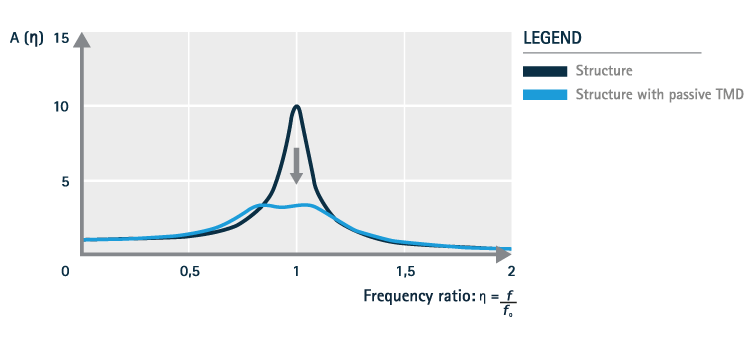
Magnification function A (ƞ) to explain the functional principle of passive tuned mass dampers
Functional principle of semi-active and active systems
Semi-active systems are characterized by the fact that the damping properties and the natural frequency of the tuned mass damper can be permanently adapted. An optimal effect is thus also achieved in buildings with variable properties.
Active systems consist of an actuator with reaction mass and a control unit with a sensor. Structural vibrations are detected constantly in order to generate damping forces, which in turn reduce the vibrations of the structure.
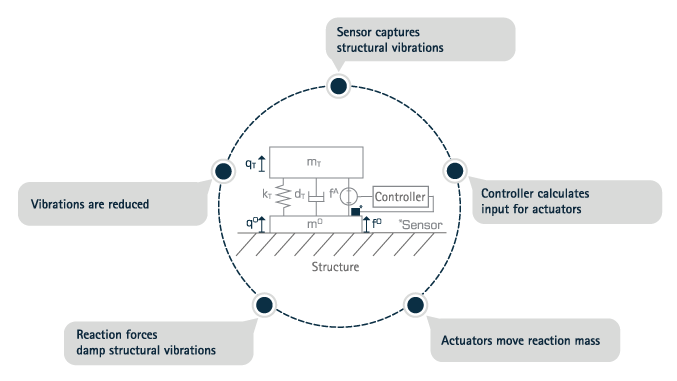
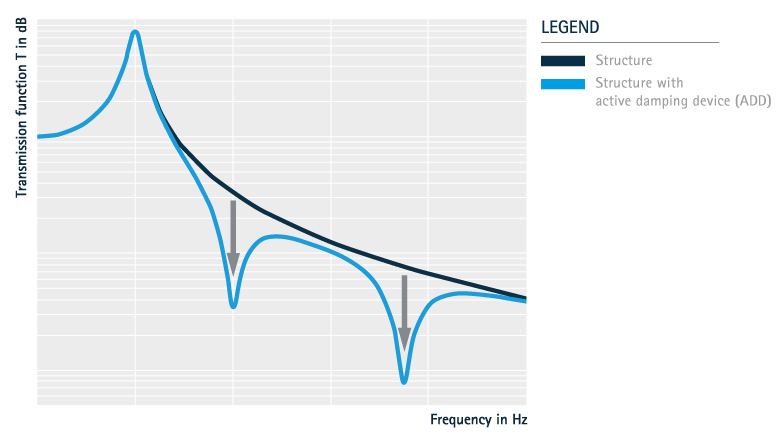
Transfer function to explain the operating principle of active tuned mass dampers
Product features
- Innovative damping mechanisms, the optimum damper is used depending on the application:
- Friction dampers
- Eddy current dampers
- Viscoelastic dampers
- Integrated monitoring systems with real-time monitoring and web interface
- Manufacturing according to industrial standards with the highest quality requirements
The right tuned mass damper for every application
We offer the optimal solution for every application. Depending on the requirements, we choose one of our standard designs or develop a customized solution concept. From dynamic analysis during planning to on-site installation, you will be provided with all services relating to vibration dampers from a single source.

Schematic representation of VICODA’s process flow
